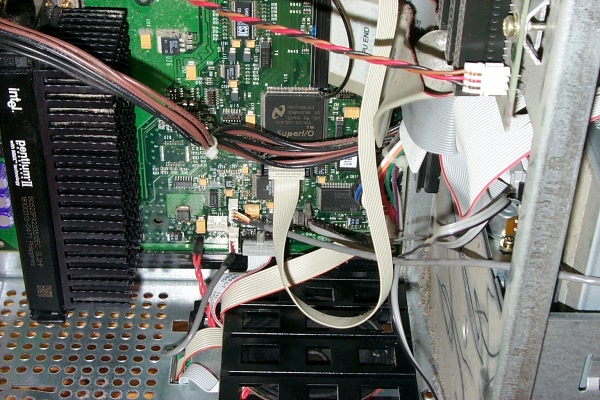
The motherboard of a 12-year-old computer: somewhere you don’t want to go
What if your computer crashed today and couldn’t be restarted? What would you lose? There is no costless way to back up your computer. Probably the easiest and least expensive plan is to periodically burn CDs or data DVDs of files you don’t want to lose.
Back in the late 1990s, when I was working for the San Francisco Examiner (may it rest in peace), I sent my older sister a quite fine computer that was being retired by the Examiner — a Hewlett Packard Kayak XA. The PC had been in the office of a former publisher of the Examiner, Lee Guittar, so the computer was executive-suite squeaky clean. My sister used this computer until about three years ago, when the computer was damaged by an ugly power failure in which the power went on and off several times in quick succession. The computer went to the garage, and my sister got an iMac.
A week or so ago, my sister brought the computer to me. I had promised to see if I could revive it. When powered on, the computer would emit a series of beeps and then go silent. I have the technical documentation for the computer, and I knew that the beep codes probably indicated a problem with the BIOS on the system board. But my attempts to reflash the BIOS using the procedure in the technical manual failed. If there was any hope for reviving the computer, a new mother board would be needed.
What would we do without eBay. There was a mother board for sale with exactly the right part number, for $20 plus $15 shipping. I bought it. After I installed the new mother board, the old PC booted with almost no further drama.
My sister had kept things well organized. Everything of interest was pretty much in three folders — “Pictures,” “Pictures 2”, and “Recipes.”
I’m trying to decide what to do with my refurbished HP Kayak XA mini-tower computer. It’s pretty slow by today’s standards. But I’ll at least keep it as relic of the San Francisco Examiner days. The computer still has an Examiner property tag on it.
Here is a sampling of the photos which were almost lost.

San Francisco, looking across the bay from Point Bonita. My mother and sister used to make annual trips to San Francisco. Several of these photos were taken on those trips.

Mendocino County, California, along Highway 1. In Ireland those rocks would be called skelligs.

My sister’s deviled eggs, looking very Southern
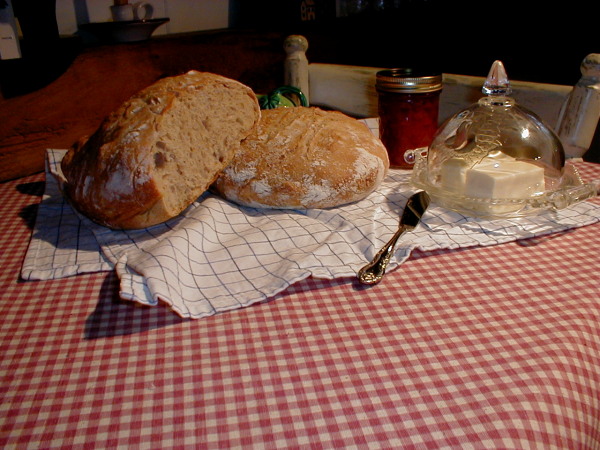
Loaves of bread made by my sister

I believe this is some sort of apple pastry, made by my sister

A pie, made by my sister

The Hillsville Diner, Hillsville, Virginia. It’s about 40 miles northwest of here.

Inside the Hillsville diner

That’s me serving pinto beans from the wood cookstove. The stove is in a house that my sister and mother and I stayed in on a visit to Mendocino County. During the 1970s and 1980s, two of the old houses I lived in had wood cookstoves in them. I’m very skilled at cooking on a wood stove. Notice the gas stove behind me. We had ’em both going.
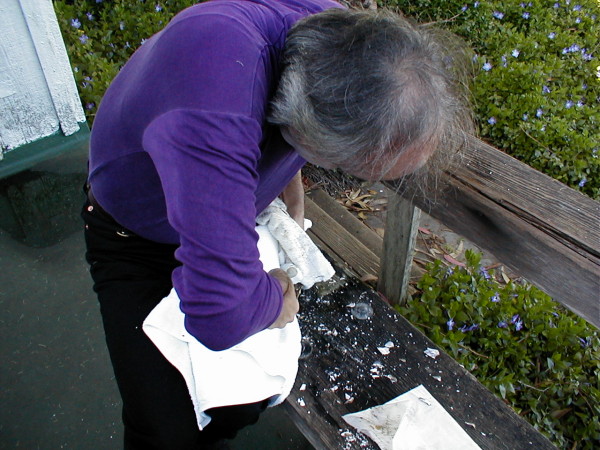
That’s me, doing a very unprofessional job of cracking oysters in Inverness, California. The oysters came (of course) from the Hog Island Oyster Company on Tomales Bay. As for the oysters, we fried ’em in batter.
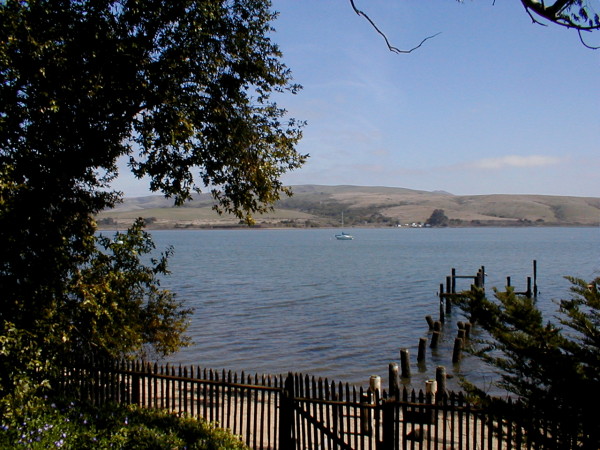
A couple of times when my mother and sister came to San Francisco, we stayed at the Chicken Ranch cottage at Inverness, California, right beside Tomales Bay. In spite of its humble name, the Chicken Ranch cottage was at the time an outpost of Manka’s Lodge. This photo is taken from the backyard of the Chicken Ranch cottage.
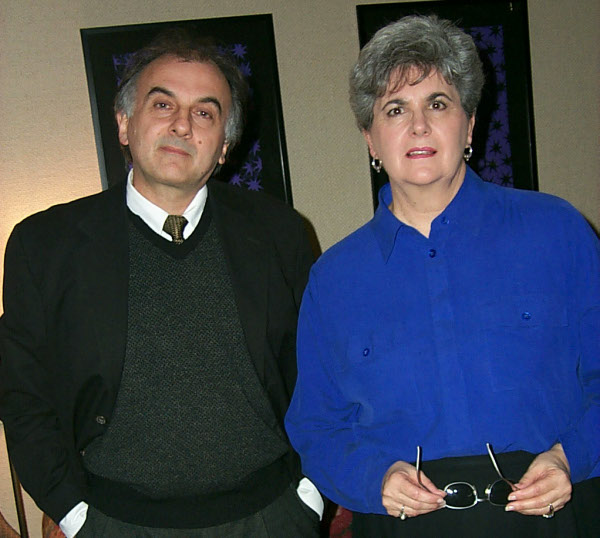
This is my sister and I, before the premiere of a Sharon Stone film in San Francisco. My boss at the San Francisco Examiner, Phil Bronstein, was married to Sharon Stone during that epoch, and so I got invitations like that. What an era: the thrill of the dot-com boom, grief for the end of the Examiner, and some Hollywood glamour thrown in.



